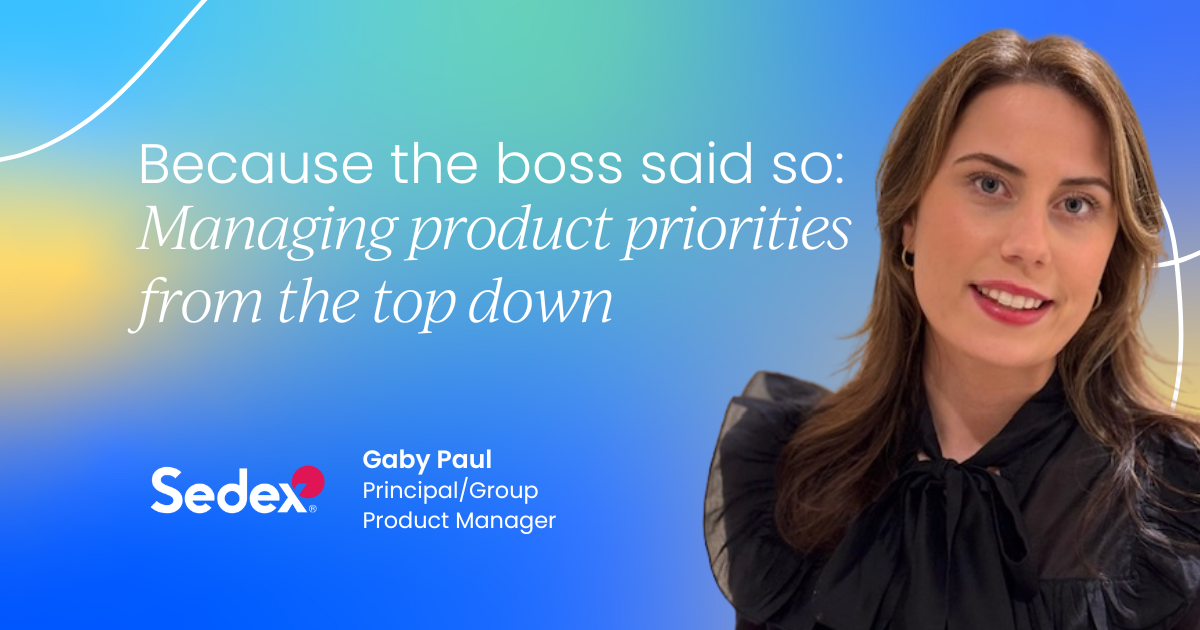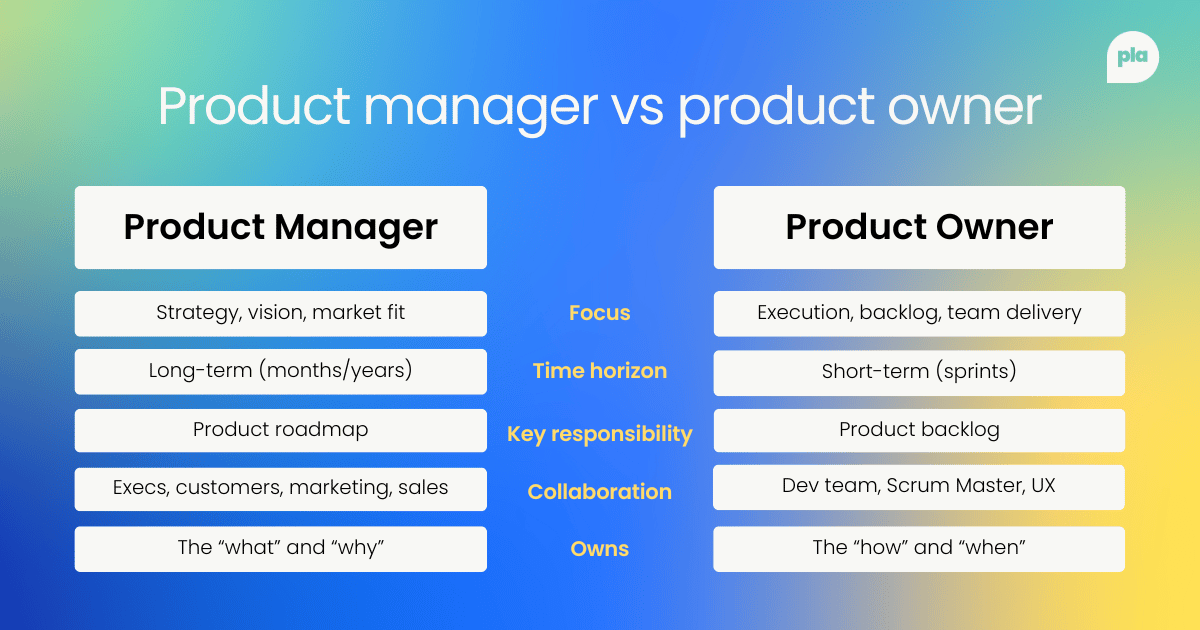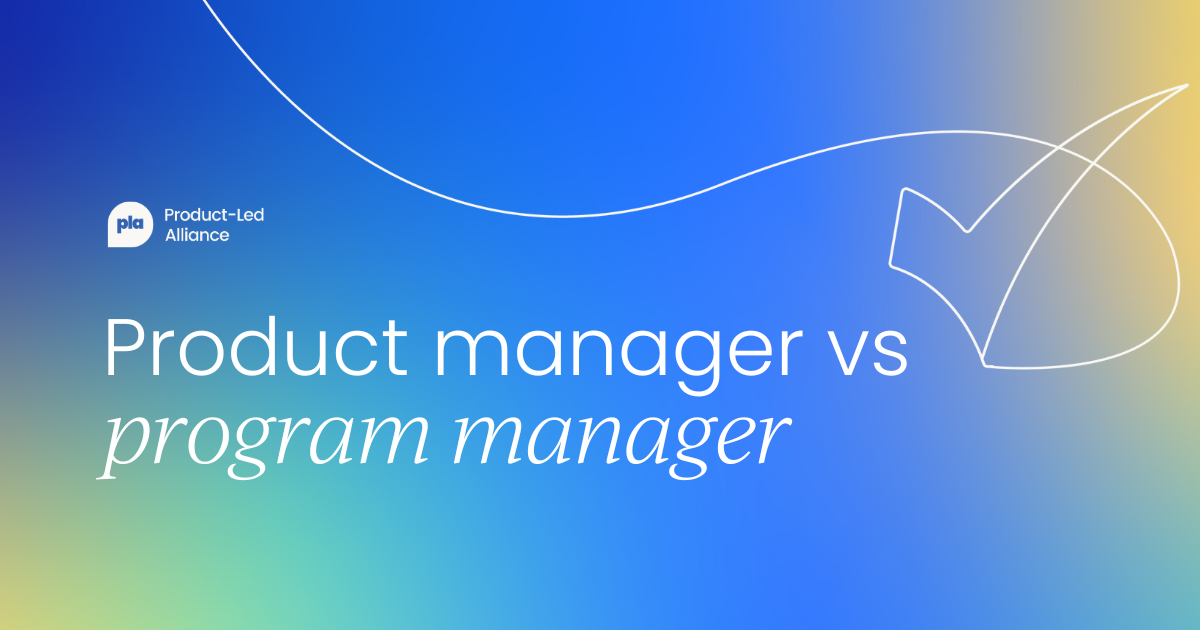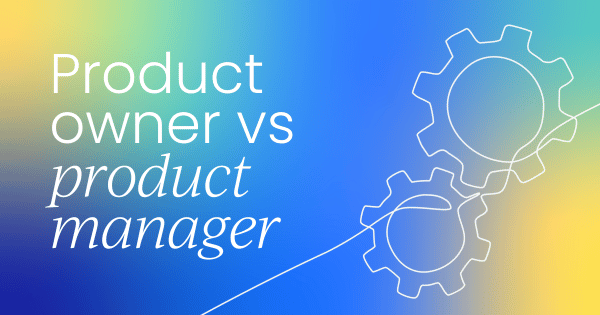TL;DR
Product managers are strategic professionals focused on creating product vision, objectives, and understanding market requirements.
Product owners are more tactical and focus on translating strategy into tasks, usually as part of an agile team.
Keep reading to explore the differences between these two roles in more detail and uncover if you really need both roles.
What is a product owner?
The product owner role was created as part of the Scrum agile methodology and was designed to ensure the maximum amount of high-quality work was produced from the agile development team.
With this in mind, most product owners ensure the product vision (created by a product manager) comes to life, by managing the tactical execution of the strategy.
This involves working closely with development teams, as well as marketing, customer service, product managers, design, and project managers.
The product owner role is also often referred to as the “backlog owner” as they’re responsible for managing, pruning, and prioritizing items within the team’s backlog to ensure the right tasks are completed at the right time.

Roles and responsibilities of a product owner
- Managing the product backlog: Keep the backlog up to date by prioritizing tasks, features, and bug fixes based on business value and customer needs.
- Writing user stories: Create clear, concise user stories that help the development team understand what needs to be built and why.
- Prioritizing needs: Balance the interests of different stakeholders and make tough calls about what to build first.
- Collaborating with stakeholders: Work closely with customers, business leaders, and other teams to gather feedback and ensure the product aligns with broader goals.
- Working with the development team: Be available to answer questions, clarify requirements, and make quick decisions to keep progress moving.
- Accepting or rejecting work: Review completed work to make sure it meets the acceptance criteria and delivers value.
- Keeping the team focused: Help the team stay aligned with priorities and avoid distractions that could derail the sprint.
- Tracking progress and outcomes: Monitor metrics and feedback to make informed decisions about what to improve next.
- Championing the user: Always keep the end user’s needs and experience at the center of every decision.
Skills of a product owner
A great product owner brings strong communication, prioritization, and decision-making skills to the table.
They need to be well-versed in agile practices, comfortable managing a backlog, and able to balance the needs of stakeholders with the realities of development.
A keen eye for detail, solid understanding of the user, and the ability to translate high-level goals into actionable tasks are essential for success in this role.

What is a product manager?
A product manager's (PM) role is to drive the product’s vision forward by creating the product strategy, defining objectives, and monitoring wider market trends to ensure the product is successful.
Product managers own the entire product development process. They use research and data to define a compelling product vision, build a strategic roadmap, and work cross-functionally to bring that vision to life.
Unlike product owners, who live mostly in the world of day-to-day development execution, product managers zoom out. They spend time thinking about what to build next, why it matters, and how it aligns with business goals.
PMs often act as the “CEO of the product” – responsible for product success, but without direct authority over teams. This requires strong leadership, influence, and the ability to motivate others without micromanaging.

Roles and responsibilities of a product manager
- Setting the product strategy: Define the big-picture goals and long-term plan for the product based on market research, business objectives, and user needs.
- Understanding the market and users: Stay on top of industry trends, competitors, and customer feedback to make smart, informed decisions.
- Defining and owning the roadmap: Lay out a clear, realistic timeline for how the product will evolve over time, and update it as things change.
- Aligning cross-functional teams: Work closely with engineering, design, marketing, sales, and support to make sure everyone is pulling in the same direction.
- Gathering and analyzing data: Use data to back up decisions, spot opportunities, and measure how the product is performing.
- Communicating with stakeholders: Keep leadership and other teams informed and engaged with updates, progress reports, and strategic context.
- Defining success metrics: Set clear goals and KPIs for the product, and track them to see what’s working and what needs improvement.
- Supporting go-to-market efforts: Partner with marketing and sales to ensure a successful product launch and ongoing growth.
- Being the product's advocate: Serve as the voice of the product both inside and outside the company, and always push for delivering real value to users.
Skills of a product manager
Product managers need to think strategically, communicate clearly, and lead cross-functional teams without direct authority. Data analysis is essential for making informed decisions about strategy.
Strong PMs are excellent at prioritizing, crafting product vision, and aligning teams around a roadmap that drives business impact.

Product manager vs product owner
1. Focus and scope
A PM focuses on the why and what: why the product exists, what problems it's solving, and how it fits into the business strategy. They think broadly across the product lifecycle and market.
Whereas a product owner focuses more on the how and when: how features are delivered and when they should be prioritized for development. They operate at the team level, especially in Agile/Scrum environments.

2. Strategic vs. tactical
Product managers work at a more strategic level. They shape the vision, product strategy, and roadmap, often looking 6–12 months (or more) ahead.
On the other hand, product owners work more tactically. They focus on the current and next sprint, managing the backlog and making day-to-day decisions with the development team.
3. Stakeholder engagement
Product managers interface with stakeholders such as customers, executives, marketing, and sales to align the product with market and business needs.
While product owners primarily collaborate with the Scrum Master and the development team to ensure work is completed and to refine project requirements.

4. Decision-making authority
PMs have broad authority over the product’s direction, features, and success metrics. They often define which problems should be solved next.
Product owners have authority over the backlog and feature details. They refine what the PM sets, deciding how to break work down for the team.
5. Roadmap vs. backlog
PMs own the product roadmap – the high-level timeline and goals for product development and delivery.
Product owners own the product backlog – the detailed list of tasks, features, and bug fixes for the development team to work on.

6. Metrics and Outcomes
Finally, product managers are measured against business outcomes such as customer lifetime value, adoption, engagement, retention, and customer satisfaction.
Whereas product owners are measured on delivery outcomes such as team velocity, sprint goals, and ensuring features meet acceptance criteria.
Summary
Agile coach, Alexander Hilton, summarizes the differences as follows:
“The product owner tends to focus on tactical engagements, interacting closely with the development team, prioritizing features, and managing the backlog.
“On the other hand, the product manager often zooms out to tackle more strategic elements, liaising between the business side and the customer and even delving into market research.”
Together, these roles align around a common goal: creating successful products.

The overlap of product owners and product managers
In small organizations
In smaller organizations, one individual may play the role of a product owner and product manager. Why? Well, some product professionals argue that the product owner is just the role played within an agile team, so in theory, it could be played by a product manager – especially when resources are low.
So, in smaller organizations, the roles may end up being one in the same until more resources become available to differentiate the product team.
Alexander shares some benefits of combining these roles:
#1 Creating a single vision
“Think about the most memorable melodies or compositions you’ve encountered. They flow seamlessly, each note leading into the next, creating an enchanting harmony.
“Similarly, when roles in product management are unified, the outcome is a product that reflects a singular, coherent vision. Instead of fragmented interpretations of what the product should be or could be, we get a focused narrative driven by a holistic understanding.”
#2 Enhanced communication
“With the merging of roles comes the reduction of intermediaries.
“Conversations become more straightforward and more direct. The need for constant translation, interpretation, or mediation diminishes.
“Every team member, whether they’re on the development side or the business side, knows precisely whom to approach with queries, feedback, or ideas.
“This simplification can be a powerful catalyst for innovation, where ideas aren’t stifled by bureaucratic layers but are nurtured in a collaborative environment.”
#3 Increased accountability
“There’s an undeniable gravitas that comes with taking complete ownership. When roles are merged, the responsibility isn’t distributed thinly across various entities. Instead, there’s a clear line of accountability.
“Challenges are met head-on, successes are celebrated in unison, and the entire product lifecycle becomes a cohesive journey navigated with purpose and determination.”
To summarize, Alexander believes, “By consolidating roles, we might just discover a framework that allows for both depth and breadth, fostering an environment where products are crafted with passion, precision, and a profound sense of purpose.”

In larger organizations
While this overlap has its benefits, in larger organizations, the volume of work may require the separation of these roles as much as possible to balance the workload effectively (since both positions represent a full-time role).
Instead, product owners will work closely with product managers to ensure they’re both aligned around product strategy, vision, and prioritization. This alignment is crucial in ensuring that product development proceeds smoothly and that each team is clear about its responsibilities.
Can product owners become product managers?
Yes, absolutely. Some product professionals even consider product owners a “type” of product manager, so there’s lots of scope to move from a product owner role into a PM role.
A lot of the skills required for each of these roles, such as prioritization, communication, and knowledge of the product, overlap, making it possible to move between the roles.
Taking on a hybrid role at a smaller organization may also be a good step in moving between the roles, to understand the differences and gain some experience as a PM. But this isn’t necessary as the additional skills required can be trained on the job.

Should you hire a product manager or product owner?
Does your team need a product manager or a product owner? Maybe both? Or a combination?
The role requirements of your organization will depend on a whole host of factors, such as organization size, resources, existing team structure, and agile methodology.
As we discussed, at smaller organizations, it’s often possible to combine the responsibilities to get your product off the ground. But as you expand and grow, you may want to hire so that you have a dedicated product manager and a dedicated product owner.
In general, if you’re looking for someone to drive high-level product strategy, build a roadmap, and understand market requirements, you should hire a product manager. Whereas if you need someone to manage your backlog, keep your development team on track, and write user stories, you should hire a product owner.
Another consideration is whether you need a product owner at all. The role is typically tied to the use of an agile methodology, especially in scrum teams, so if your company doesn’t use an agile approach, you likely don’t need a product owner. A team of product managers will be enough to drive your product forward.
Want to compare product management against other roles? Discover more articles in the series:





 Follow us on LinkedIn
Follow us on LinkedIn













